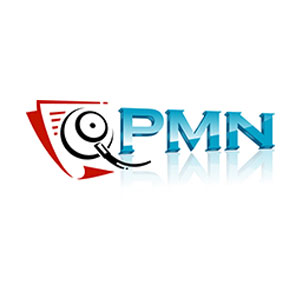
It’s generally a pretty useful thing to be able to confidently explain terms like “deductible” and “out-of-pocket costs” to your patients in the healthcare industry, as these are terms that have a fairly significant impact on their overall financial planning and health insurance plan.
Category
Business
What’s The Difference Between Deductible and Out of Pocket Maximums
What’s The
Difference Between
Deductible and Out
of Pocket
Maximums?
• It’s generally a pretty useful thing to be able to
confidently explain terms like “deductible” and
“out-of-pocket costs” to your patients in the
healthcare industry, as these are terms that
have a fairly significant impact on their overall
financial planning and health insurance plan.
• Subsequently, if they’re not kept in the loop and
don’t really know what these mean come the
time they need to pay for the services you’ve
rendered, they’re not exactly going to think
highly of your practice as it comes across as
slightly unprofessional on your behalf.
Understanding Health
Insurance Basics
• Kicking things off, let’s start with some of
the basics. Health insurance, as you
probably already know, is a contract
between the patient and their health
insurance company in which they pay a
monthly premium for the assurance that
any medical care they receive will be paid
for on their behalf.
Deciphering Deductibles
• Now, obviously, health insurance plans like this
are lifesavers for millions of Americans across
the country given how insanely expensive
covered health care services can be – but that
doesn’t mean there aren’t still some out-of-
pocket expenses that the patient might need to
pay before there health insurance plan begins
paying the bulk of it, and this expense is known
as a health insurance deductible.
• For instance, if your plan has an annual
deductible of, say, $700, this is the amount the
patient is going to have to pay in medical expenses
before their insurance starts covering extra costs –
which there’ll certainly be no shortage of.
Understanding Out-of-Pocket
Maximums
• On the other hand, though, the out-of-pocket maximum
is basically the most a patient will ever need to pay for
covered services in a plan year, so once they’ve actually
hit this limit, their insurance company won’t make them
pay anymore (in things like deductibles and
copayments), so they’re not completely overwhelmed
with healthcare costs for the rest of the year – with the
exception of their monthly premiums, of course.
Distinguishing Between the
Two
• So, to reiterate, deductibles are basically the initial
amount the patient has to pay before their insurance
properly kicks in, while out-of-pocket maximums are
the total amount they’ll ever have to pay in one year
(including the deductibles) before their insurance
takes over and covers 100% of your covered services.
• In simpler terms, try to think of the deductible as the
hurdle they need to jump over first and the out-of-
pocket maximum as a sort of safety net so they’re
not going into total financial ruin with the amount of
deductibles they might need to pay that year.
Why Partner with PMN?
• Both deductibles and out-of-pocket maximums are just
another nuance on the medical billing side of things
that are taking your staff away from their core
responsibilities – looking after the patients that come
into your practice.
• While it certainly helps to have an understanding of
these sorts of things, handling claim submissions and
communicating with insurance providers is ultimately a
job that’s best left to people with professional
expertise, which is exactly why large medical practices
hire a fleet of in-house staff to do it for them rather
than delegating it to their existing physicians.
• Smaller practices like yourselves, on the other hand,
often don’t have the funds to pay for this sort of
thing, and EHR software and other medical billing and
coding technology come with their own
complications, too – whether it’s the upfront cost
you’re going to have to pay or the time spent training
your staff how they work and integrating them into
your practice.
• As a result, you’re far better off going to a specialized
medical billing and coding service such as PMN to
deal with insurance providers on your behalf – not
only so your claim denial rate is drastically reduced
(almost eliminated, even), but because of how much
more affordable and convenient it is.
• PMN brings upwards of 20 years of experience across a
range of different fields – from family medicine to less
general areas like ophthalmology – to your practice, so
regardless of what kind of billing or coding
responsibilities your particular practice deals with on a
daily basis, PMN can handle it promptly so you’re getting
reimbursed as fast as possible and can spend more direct
time with your patients.
• If you want to know more about what PMN can do for
your practice, don’t hesitate to get in touch over the
phone by calling 949) 215-5055. Still, not everyone will
feel comfortable making such a big commitment over the
phone, so you can book an appointment at their office in
Laguna Hills, Orange County, California, if you’d prefer an
in-person consultation.

Comments